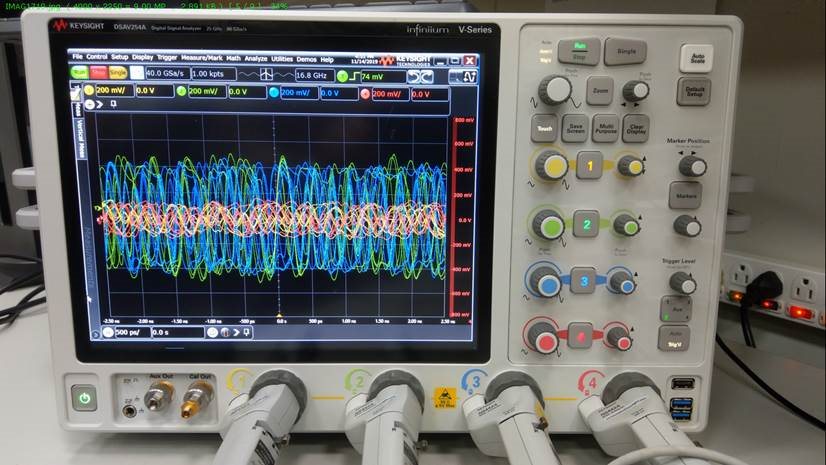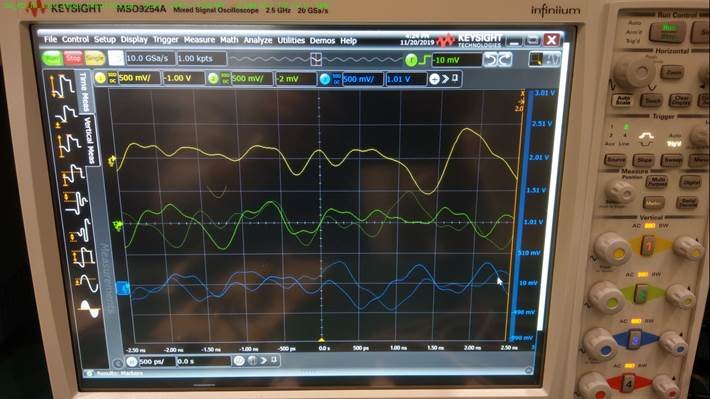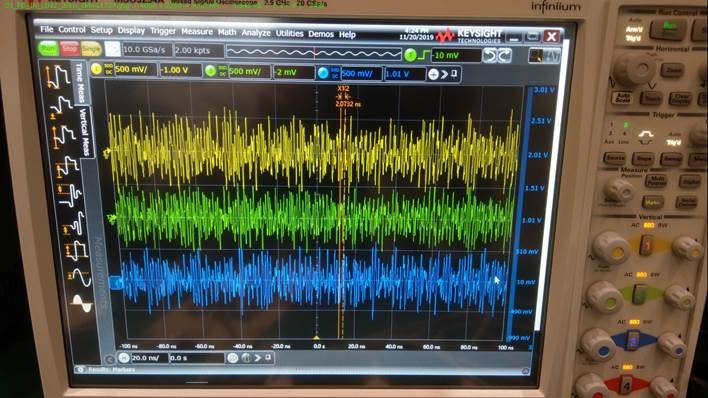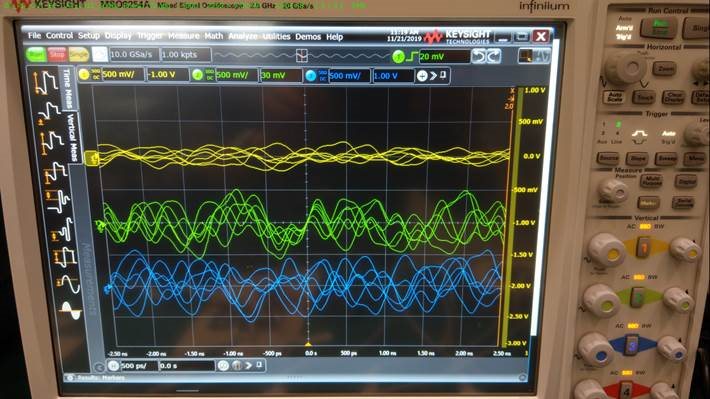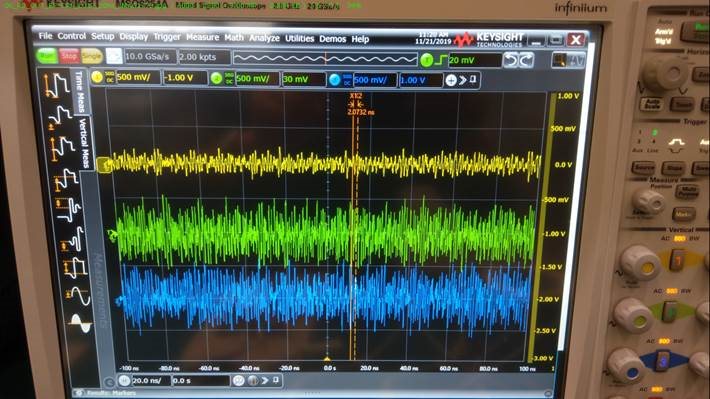Hi,
My customer is having below issue:
Customer found the output signal swing level unbalance between Lane 0/3 and Lane1/2 when we want to check the eye diagram.
Base on this, we measured the TDP142 DP input and output.
From the measurement, the input signal swing level are the same.
But after TDP142, the output signal (Lane 0/3) swing level is attenuated, but Lane 1/2 not.
We test 2 PCBs and the symptom are the same no matter I2C or GPIO mode and Snoop enable or disable.
So, please help to check with your team is it known issue or some setting wrong.
Below the 2 PCBs setting we used.
PCB1: I2C mode, register value
|
Reg addr |
Value |
Value in binary |
|
0x0A |
0x12 |
0001 0010 |
|
0x10 |
0x88 |
1000 1000 |
|
0x11 |
0x88 |
1000 1000 |
|
0x12 |
0x00 |
0000 0000 |
|
0x13 |
0x00 |
0000 0000 |
PCB2: GPIO mode
I2C_EN (Pin17) = L (1K pull down)
SCL (pin21) = L (10K pull down)
SDA (pin22) = L (10K pull down)
A0 (pin11) = Float
DPEQ0 (pin14) = L (1K pull down)
DPEQ1 (pin2) = Float
DPEN (pin23) = H (10K pull to Vcc)
SNOOPENZ (pin29) = L (10K pull down)
Measurement waveform
1st measurement for eye check, TDP142 output (PCB1 I2C mode)
CH1: Lane0, CH2: Lane1, CH3: Lane2, CH4: Lane3
2-1 measurement, Check TDP142 input (PCB2 GPIO mode)
CH1: Lane0, CH2: Lane1, CH3: Lane2
2-2 measurement, Check TDP142 output (PCB2 GPIO mode)
CH1: Lane0, CH2: Lane1, CH3: Lane2
Please let us know if you have further comments on this issue or let us know if more information needed.
Thanks a lot for your help.


